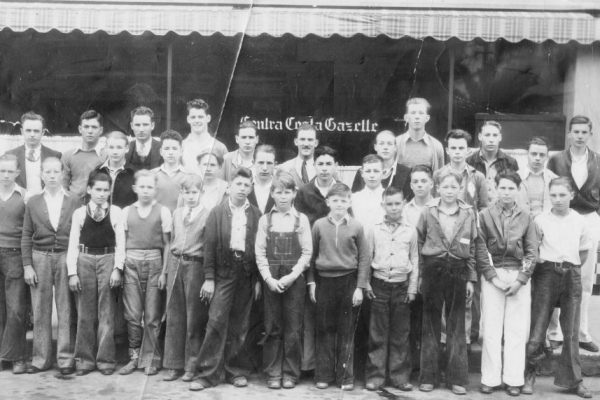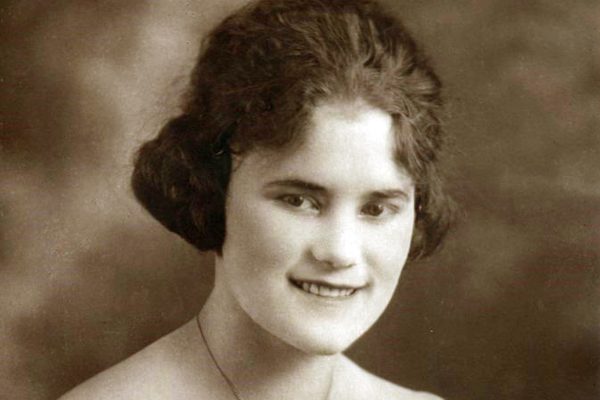By HARRIETT BURT
Martinez News-Gazette Contributor
The special screening of the restored Francis Ford Coppola film, “Tucker: The Man and His Dream” will be held Saturday, August 11 at the Shell Club House. Doors open at 6 for hearty hors d’ oeuvres and a silent auction and the screening will begin at 8 p.m. James Mockoski, film archivist at American Zoetrope who restored the film, will be on hand. Tickets for the elegant event cost $75 per person and may be reserved either by Event Brite and typing in Martinez or by calling the Martinez Historical Society at 228-8160 and leaving a message with your name and contact information. You will be contacted within 24 hours to complete the purchase.
See you there! HJB
 This writer does not pay much attention to cars. But I did own one of the very first Mustangs back in 1964. And I loved that as I drove by with the top down, kids mimicked the introductory advertising that featured other kids yelling “Mustang !” as one passed by them.
This writer does not pay much attention to cars. But I did own one of the very first Mustangs back in 1964. And I loved that as I drove by with the top down, kids mimicked the introductory advertising that featured other kids yelling “Mustang !” as one passed by them.
My dad would only drive Chevrolets so my car was the first Ford in our family. There were remarks about that. My late brother owned several cool cars, one of which was a Ford from sometime in the early ‘30s that had been hot-rodded and which he displayed at various regional car shows including the ones on Main Street in the ‘90s. Other than that, I appreciate that people describe my 14-year-old bright red Ford Focus as cute although it makes me happier that it is dependable at 100,000 miles…knock on wood.
But there is a whole, compelling world out there of people who worship old cars and work hard to preserve them. Probably among the most enthusiastic are those who are fascinated with the Tucker 48, the living dream of Preston Tucker, Detroit policeman/ inventor/businessman/race car builder/ inventor of a high-speed combat car that went too fast (100 miles per hour) for U. S. Army procurement officers/inventor of a gun turret that interested the US Navy, etc.
After World War II, Americans were ready to either ditch the cars they had bought in the late 30s and the first two years of the 40s or to take the money they had made working for the war effort and purchase an automobile perhaps for the first time. The Big Three (General Motors, Ford and Chrysler), busy building equipment for the war efforts such as airplanes, tanks, jeeps (Tucker contributed ideas for the design), hadn’t focused on new models. Studebaker, a smaller company, introduced an all-new postwar model. Preston Tucker took a different approach, designing a safety car with many innovative features and modern styling. His specifications included a water-cooled aluminum block, a flat-6 rear engine, four-wheel independent suspension, fuel injection, the location of all instruments within reach of the steering wheel, seat belts, and a padded dashboard. (partial list). Tucker and his design team had ideas about automobile design that could have been very successful in his time except for the entrenched opinions of the Big Three Automobile manufacturers and their political supporters. Indeed many of his innovations were later adopted by American car companies when the public began expressing their preference for those features and others by purchasing Japanese automobiles which flooded the US market in the 1970s and beyond. There were many more innovations than listed above, just about all of which we now take for granted.
Although the film includes an assembly line, there actually wasn’t one. The 51 Tucker cars were built individually with changes made with each new car. But apparently, the car raised a lot of interest. The film tells that story plus the obvious attempts of entrenched interests to block its production and to destroy Tucker’s company. Articles cited on Wikipedia and by the Tucker Automobile Club make clear the parts of the movie that were not accurate for cinematic and story-telling reasons. Club author Larry Clark lists them all but seems very sincere that those changes or exaggerations were sensible film story-telling moves and that the essential parts of the story are historically accurate. He gives the film high marks as did Rotten Tomatoes (84 points) and other movie rating groups.
What has struck me during the past few weeks I have been gathering Tucker facts and Tucker lore, is the deep enthusiasm the Tucker division of car enthusiasts have for the vehicle. 51 cars were built in 1948 and possibly 1949. They were all numbered.
Three are known to have been damaged beyond resurrection. 47 are known to have survived intact and enthusiasts know where every single one of those are and who owns them and what condition they are in and probably how much they paid for them. Francis Ford Coppola owns one which is on display at his winery. Restored models can sell for as much as $3 million.
Steve Lehto, a writer and attorney from Michigan who writes car articles for magazines such as “Road and Track” plus a book, “Preston Tucker and His Battle to Build the Car of Tomorrow”, wrote the story in the July, 2016 issue of “Road and Track”, of Tucker 48 #1044 which a collector car restorer, buyer and seller, heard was in a barn in Ohio which turned out to be a secure and weather—proof metal building with a gravel floor covered with a 2 x 6 wood floor to protect the car from moisture.
The car collector was invited to come see it. He was impressed with its condition. The car had been purchased in 1982 and the owner had only driven it three times by 2001, the approximate time of the visit. The odometer read 7,877 miles.
“The owner of the car had a few issues with it and had parked it hoping to find the time later to iron out the bugs.” According to Lehto, “the problems were of the sort many Tucker owners are familiar with: transmission issues, cooling problems and so on. But as they say, it ran when parked,” Lehto writes.
The visitor immediately offered to buy the car but the owner was not interested. The two did keep in contact and three years later, a deal was made.
Despite continuing need for repairs, replacements and new features during the production of the 51 Tuckers, the purchaser, who had restored three others, found this one to be in better shape than any of the others he had worked on. Brakes, fuel lines, radiator, fuel pump, carburetor, ignition….all were ‘remarkably serviceable’ considering how long it had been since the car had been driven.
The restorer “took all the steps used when reviving an engine that hasn’t been turned over in 30 years and then – it started right up.”
“The doors are tight and the body and frame show virtually nothing in the way of corrosion. “As the ‘Before’ car in a restoration project, this Tucker is in better shape than any he had restored before.”
Tucker himself, although acquitted of stock fraud in an emotional trial, lost nearly everything. But according to enjoyed a rebound of his reputation. “His optimism was remarkable; after the rial was over, he was quoted as saying ‘Even Henry Ford failed the first time out’”. He pursued other innovative ideas including a sports car called the Carioca which was never developed before dying of lung cancer in 1956 at the age of 53.
The opportunity to see the restored film which includes a 20 second scene outside the Wakefield Taylor Courthouse, is provided by the generosity of Francis Ford Coppola’s American Zeotrope production company and archivist James Mockoski and his assistant, Deborah Hebert Lee.
Sources:
Wikipedia biographies of different aspects of Preston Tucker’s life.
“An Ultra-Rare, $3 million Tucker 48 Was Discovered in an Ohio Barn” by Steve Lehto, “Road and Track Magazine”, July 25, 2016
“Tucker: The Man and His Dream: A Look Behind the Scenes” by Larry Clark of the Tucker Automobile Club of America.


